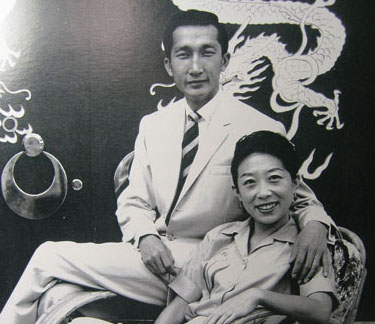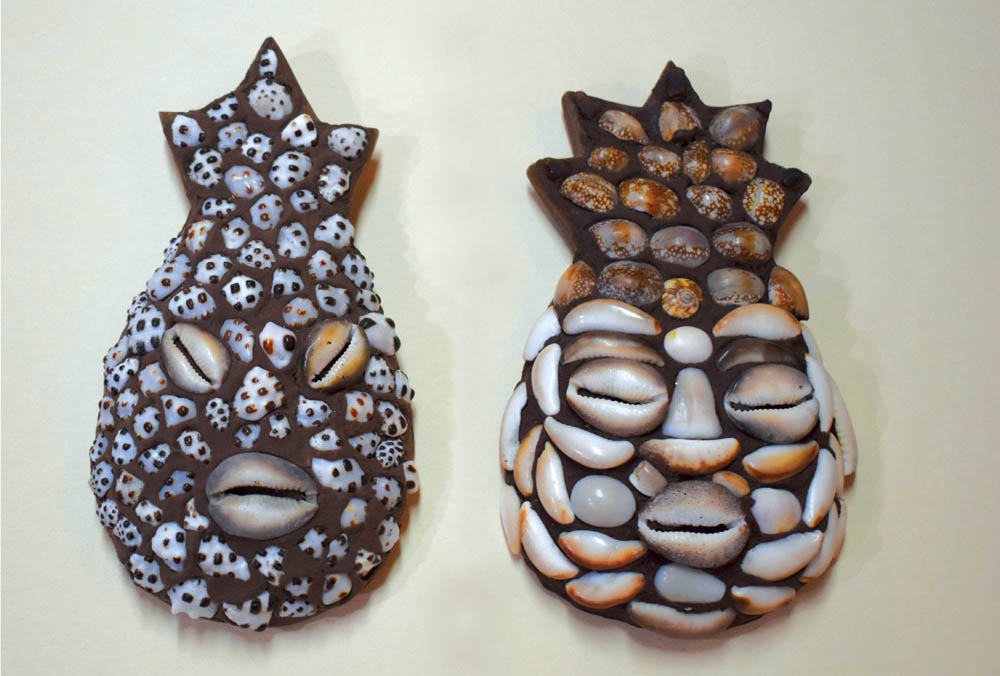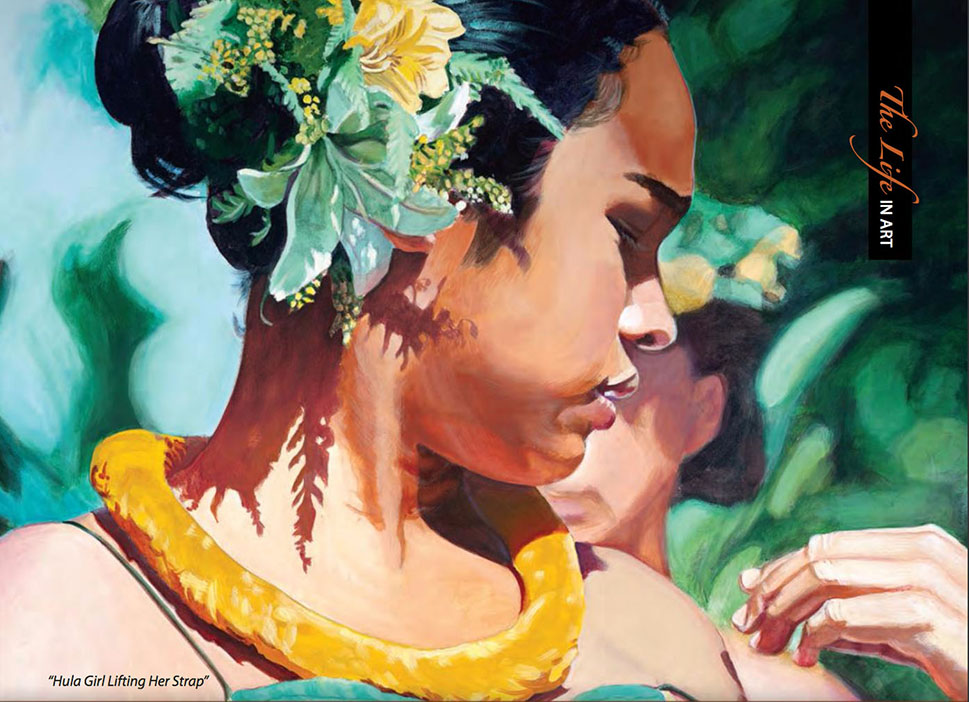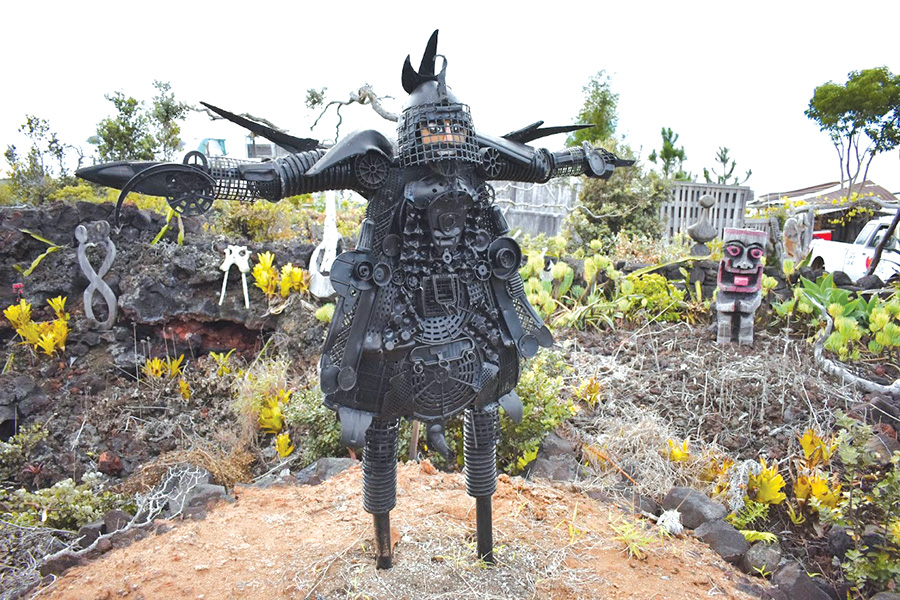
Sea Love with Don Elwing
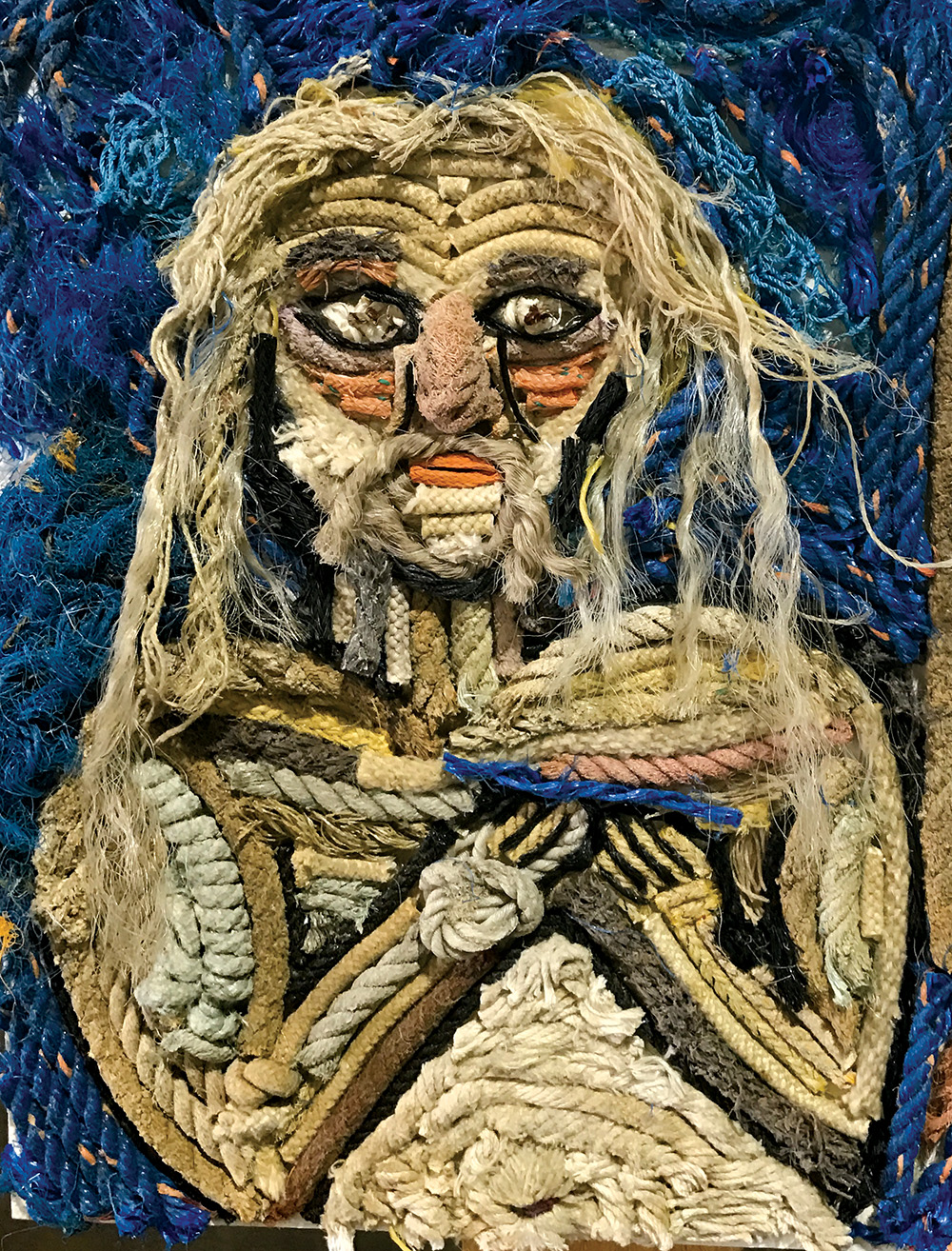
By Britni Schock
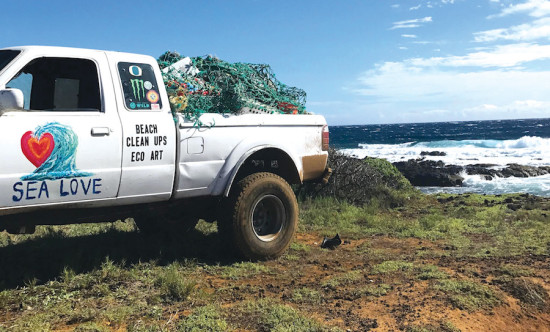
Driving up mauka (mountain-side) of the Ocean View community, you see an endless sky, a terrain of ‘ōhi‘a lehua trees, and lava rock. After a few miles you arrive at the home of Don Elwing (Uncle D), and are greeted by two towering Japanese samurais. Upon closer examination you notice something unique about these mesmerizing figures. These solid black statues are made completely out of plastic and rubber trash. For years, Don has been cleaning up trash along the coastline between Papakōlea (Green Sands Beach) and Ka Lae (South Point). Using his truck named “Da White Rhino”, he ventures off the beaten path to pick up heavy loads of marine debris along the shore. The words ‘Sea Loveʻ are painted alongside a wave coming into a heart on the door of Da White Rhino. Don hopes to turn his trash cleanup into a nonprofit organization to expand and further spread awareness.
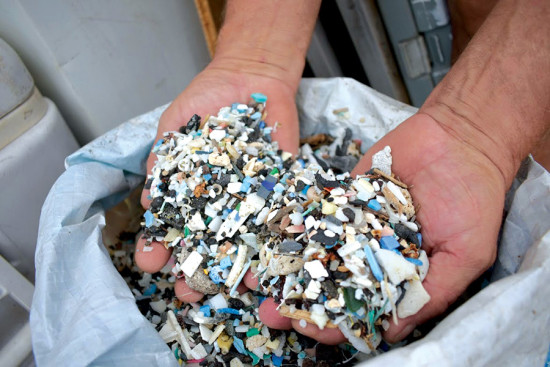
In 2017, Don estimates that he collected about 3000 pounds of plastic and 7000 pounds of ghost net/rope. A significant percentage of the incredibly large amount of trash that he’s collected gets taken to the landfill. Some is used for Don’s art, and due to the popularity of debris art, he is now shipping materials to other debris artists on the mainland. He has been trying to upcycle as much of the trash as possible. Uncle D shipped more than 600 pounds of upcycled materials to the mainland in 2017 alone! These shipments included thousands of plastic bottle caps, buckets of microplastics, and huge bundles of rope and net. “I’ve always wanted to give back something, somewhere. I started volunteering with Hawai‘i Wildlife Fund down there [at South Point]. They are stellar folks and good inspiration. So I started picking up the plastic down there with them and was just overwhelmed with how much was there,” said Don.
Every day Don sees first-hand the disturbing magnitude of debris and trash that washes up onto the shores of Hawai‘i Island. He wants to spread awareness to people who may not see the trash, yet still need to be informed about this environmental issue. “If they can’t get to the beach, I try to bring some of the beach to them. Which unfortunately is a lot of plastic,” said Don.

Don wants people to understand how much plastic is floating around in our oceans and the effect it is having on the entire ocean and food chain. “I call my stuff awareness art to bring people’s awareness to how much plastic is coming in. Plastic lasts forever. Cleaning up the beach showed me not only how much plastic was coming in, but 30–40% of it has obvious fish bites in it,” said Don.
Oregon, Alaska, to Hawai‘i
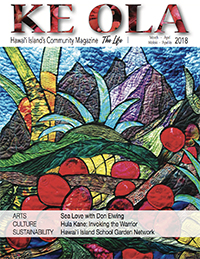
Born in Oregon, Don spent time traveling to various places around the western side of North America and the Hawaiian Islands. He has been a Hawai‘i Island resident for about 30 years, and has always had an immense respect for the ocean. He has always been near it, either working or enjoying some playtime. Don reflects, “I grew up on the Oregon coast and always clammed, crabbed, and fished out of the ocean. When I lived in Alaska on the coast, I did the same thing there and then came here. So I always respected the ocean. To me it’s a real sacred place”.
He has found fishing supplies that were lost in the 2011 Japan tsunami and have voyaged across the Pacific to our Hawaiian shores. “There were 15,000 fishing boats lost in the Japanese tsunami plus all the businesses along the coast that supported the fishing industry. So a ton of all this net and rope that’s still washing up, a lot of it is from the fishing industry. All of these baskets and stuff I find, I date them back because of what it says on them, back to the fishing industry,” said Don.
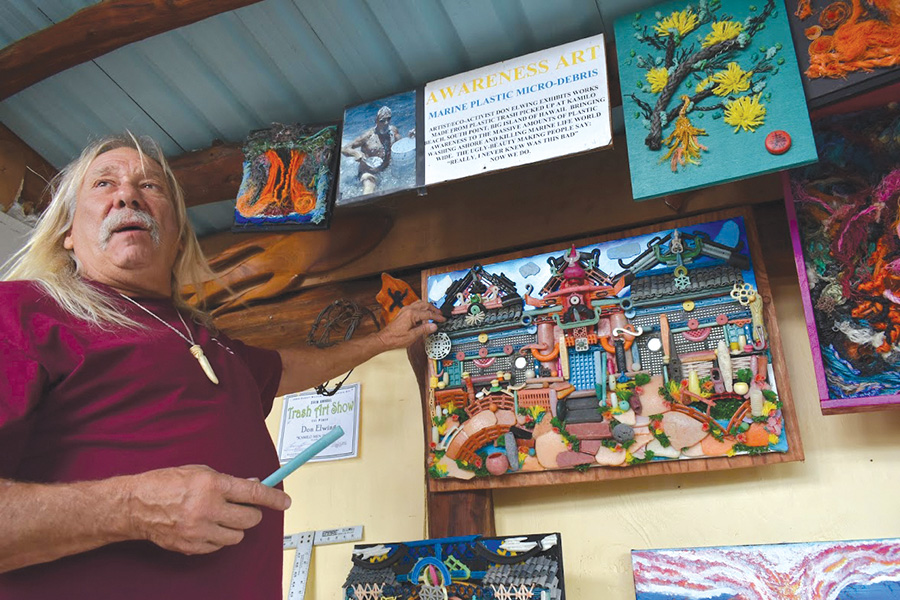
Don has a great love for Japan and Japanese culture, which is often reflected in his art. He explains how he lights Japanese incense before starting a new art piece and experiences a feeling of spiritual connection to the very people who tied the knots on the rope of the debris he has found. He describes his art as a tribute to all the people who lost their lives in the tsunami. It felt natural for Don to create the Japanese samurais because he feels that in another lifetime he lived a Japanese life.
The Artist Emerges
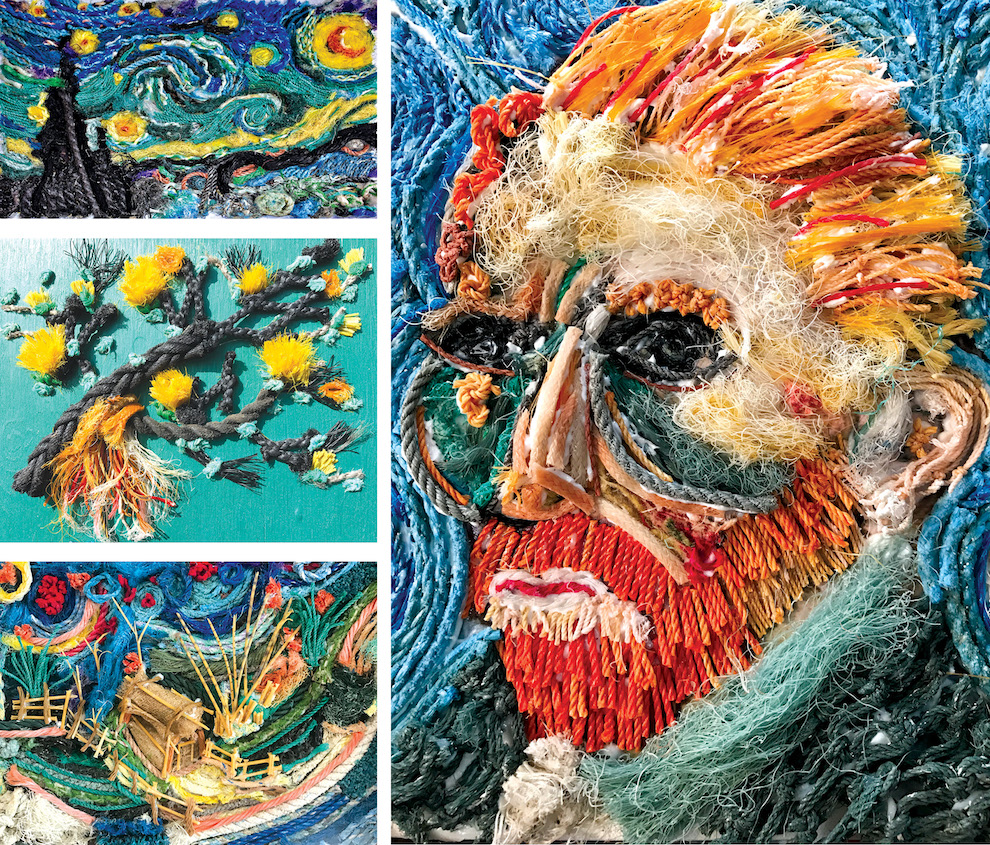
Don has always been creative and began with woodworking about 10 years ago. “I never went to art school. I just started messing around with this stuff and I always say the purpose of why I do this is how I get inspired.” Plastic art has become incredibly popular with artists working with marine debris, and having worked with plastic for many years, Don found his niche focusing on rope and net art. “So when I first decided two years ago that I was going to switch to rope and net, I asked myself, what can I do? I started investigating art that had big brush strokes. I came across van Goghʻs Starry Night. It was the first piece that I did attempting to use rope and net for art,” said Don.
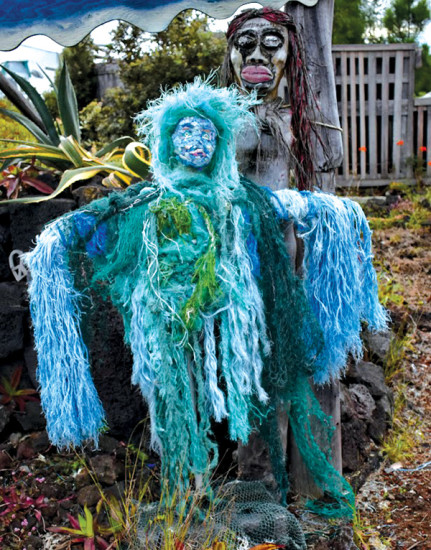
Many of the works of art that Don has created not only tell a story of our garbage epidemic, he also incorporates Hawaiian culture and nature into the pieces. ‘Ōhi‘a lehua, Pele and lava, hula, and native birds are some of the Hawaiian influences you see in many of his creations. When asked about his favorite piece of art, Don said, “I love Pele.” He has created various lava and volcano artworks, to honor his beloved Hawaiian Goddess of Fire, Pele. Uncle D and Pele have had a long relationship, dating back to the 1990 lava flow in Kalapana. He was living in the area when the flow covered the little town and grew an immense respect for Pele during this experience.
His home is a gallery in itself, displaying over 100 pieces of art, both indoors and outdoors. Don felt the desire to reach out to the Hawai‘i Island community and further share the message of what he was doing. Education and awareness of the current excessive pollution taking place in our oceans is what really drives the inspiration of Uncle D’s art. Sharing this message of marine debris and plastic abuse with the future generations is another way Don loves to spread the knowledge. He takes his “no rules art” to different schools around Hawai‘i Island and educates the keiki (children) on the serious topic with fun art projects. He regularly volunteers at the Volcano School of Arts and Sciences. He teaches the students about marine debris and takes his “gypsy art gallery” of about 30 pieces to show them. After his instruction, the students get to make a masterpiece of their own from materials Don brings in. He is a strong believer in educating the younger generations, as they are the future and have the chance to recover from the ecological damage currently caused. “The kids get the message, they really do. And they are the ones who can save the Earth,” said Don.
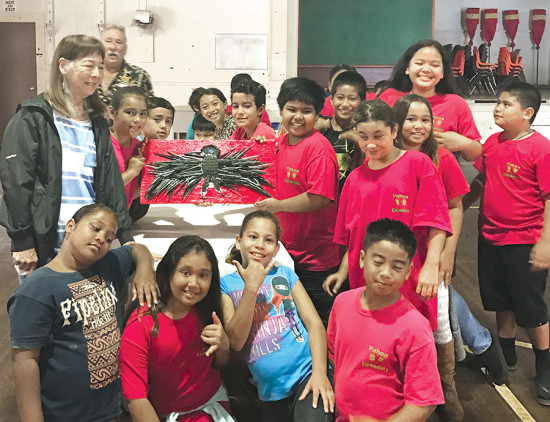
Uncle D has a remarkably humble presence and “how can I help” attitude, which is reflected in all that he does to help the ocean and our Earth. He volunteers his time to something that he is passionate about and shares it with others in a beautiful way. Don organizes beach cleanups to further spread the awareness of ocean pollution and inform others of how they can help. He believes we must mālama the ‘āina (take care of the land) and leads by example. Admirers do not realize the great deal of time that is devoted to each piece of art: collecting the debris, sorting out all the pieces, cleaning the materials, and finally getting inspired to create a work of art. One man’s trash really can be another man’s treasure, or art. By using his unique artwork to share a very important message, Don is making a wave of change and beautifying our ‘āina. ❖
For further information: wingha@hotmail.com
Facebook: Don Elwing
GoFundMe: gofundme.com/don-elwings-beach-cleanups-n-ecoart
